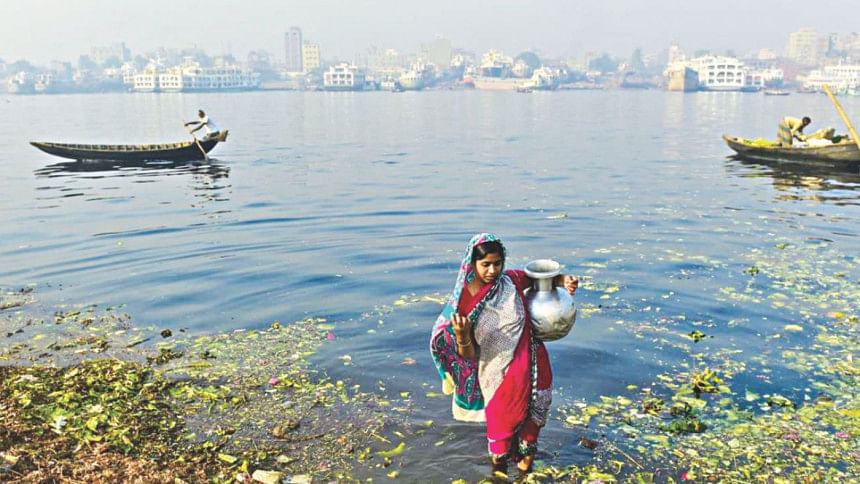Access to safe drinking water: A cultural perspective

Water is a resource that is not only necessary for our survival but also fundamental to the functionality of our society. From transporting goods for trade between nations to the simplest act of drinking from a glass—we are completely dependent on this natural element in every aspect of our life. Yet, for some reason, we take water for granted. Even though we are a country brimming with mighty rivers and blessed with plenty of rainfall, there is still a dearth of clean water for consumption. So, what is our problem with water exactly? Do we lack resources or the technical capacity to solve this issue? From my own experience of working on this issue, I came to realise that the problem with our access to water is not a technical one, but rather a cultural one.
Let me explain this with a rather simple scenario: when we see a glass of water before drinking it, how do we perceive its level of purity? In most cases, people judge water quality based on clarity; if the water is clear enough, then it must be drinkable. The lack of awareness and knowledge about drinking water among people results in a lack of effort to process water for consumption, allowing agencies and individuals with ill motives to take advantage of the scenario and boost their profit margin by selling water without properly treating it.
In a report published by The Daily Star recently, it was found that 98 percent of jar water tested showed the presence of the bacteria E.Coli, found commonly in the faeces of warm-blooded animals. The scenario is prevalent in almost everywhere, as jar water is used to make tea in your favourite tea stall, or in restaurants where people rarely care to check what water is used to cook their favourite dish. This lack of awareness of water quality is very dangerous. The situation is especially bad in low-income communities which are forced to drink contaminated water. During one of my site visits, I had the harrowing experience of witnessing children drinking murky water directly from the tap, and they had no other option other than that source of water. This was in Dhaka, where water quality is expected to be better than other parts of Bangladesh.
We as a society have to understand the gravity of the danger of drinking contaminated water on a daily basis. Contaminated water is a silent killer. It not only reduces our quality of life but also stands in the way of achieving our development goals. By drinking contaminated water, kids are unable to go to school because of frequent stomach upsets and cases of diarrhoea and cholera, hampering their access to education. Working men and women are even barred from attending their job for the same reason, reducing their productive capacity. Drinking contaminated water is a true driver of poverty although often we don't realise the extent of the danger that it poses.
The problem with water accessibility also lies in how we approach this problem as well. Most organisations and individuals working on water love the idea of coming up with new filtration and extraction processes of harnessing water. This mentality, in fact, is a problem; we concentrate so much on coming up with new low-cost or innovative treatment ideas for water that we forget that many technologies that already exist are effective enough to solve the issue. The main challenge is how we integrate these technologies into communities experiencing water accessibility issues. Instead of just providing the technology, our focus should be more on how we educate the communities regarding their water problem, raising awareness on the dangers of drinking contaminated water, teaching how to utilise the water system implemented, etc.
There are a number of ways to address the water accessibility issue but the most important aspect, in my view, is to ensure that the system implemented is accepted and integrated within the communities in a proper fashion. Therefore, designing the solution based on community dynamics and opinions is what will make a water accessibility project most effective in a given area or region. Building awareness on drinking water quality and its practices is vital to addressing this issue. For example, just by simply learning how to properly hold the glass, when drinking water, will drastically reduce the chances of micro-bacterial transmission.
Drinking contaminated water has already taken a toll on our nation. The life expectancy of a Bangladeshi averages around 70, whereas for a Japanese, it averages over 80. Just by ensuring access to safe drinking water for everyone, we can change this statistic significantly. And it can be done not by introducing new technologies, but new community planning with already existing technologies. It is time we harnessed our water potential properly. By addressing the cultural context of drinking water, alongside its technical aspects, we will not only overcome water scarcity, but also become an example for ensuring quality water for communities in need through effective management of our water resources. And that dream, I believe, is achievable for a nation of our stature and passion.
Shah Rafayat Chowdhury is the co-founder and president of Footsteps Foundation and a recent graduate of Environmental Economics and Policy from the Pennsylvania State University.





Comments